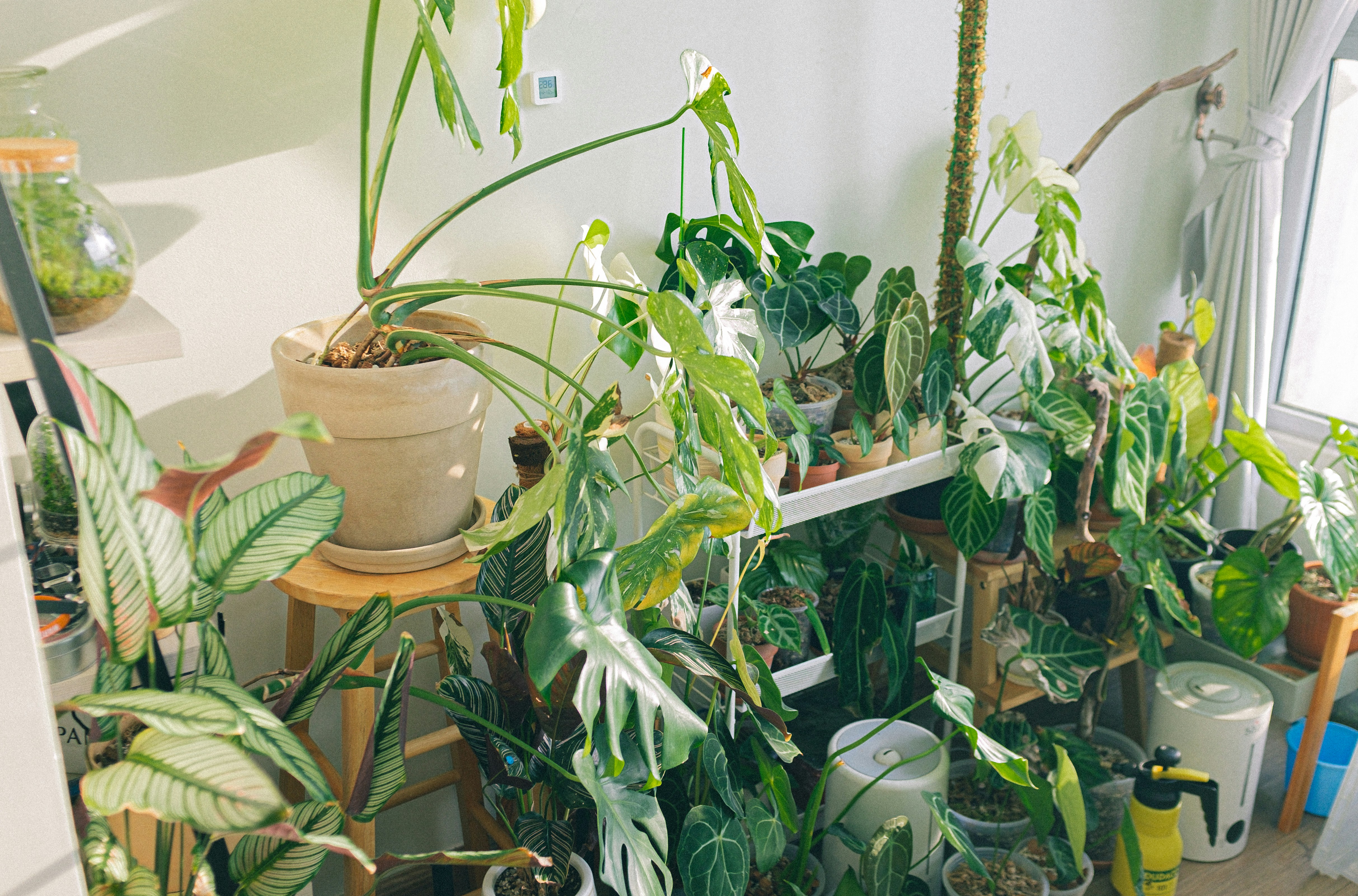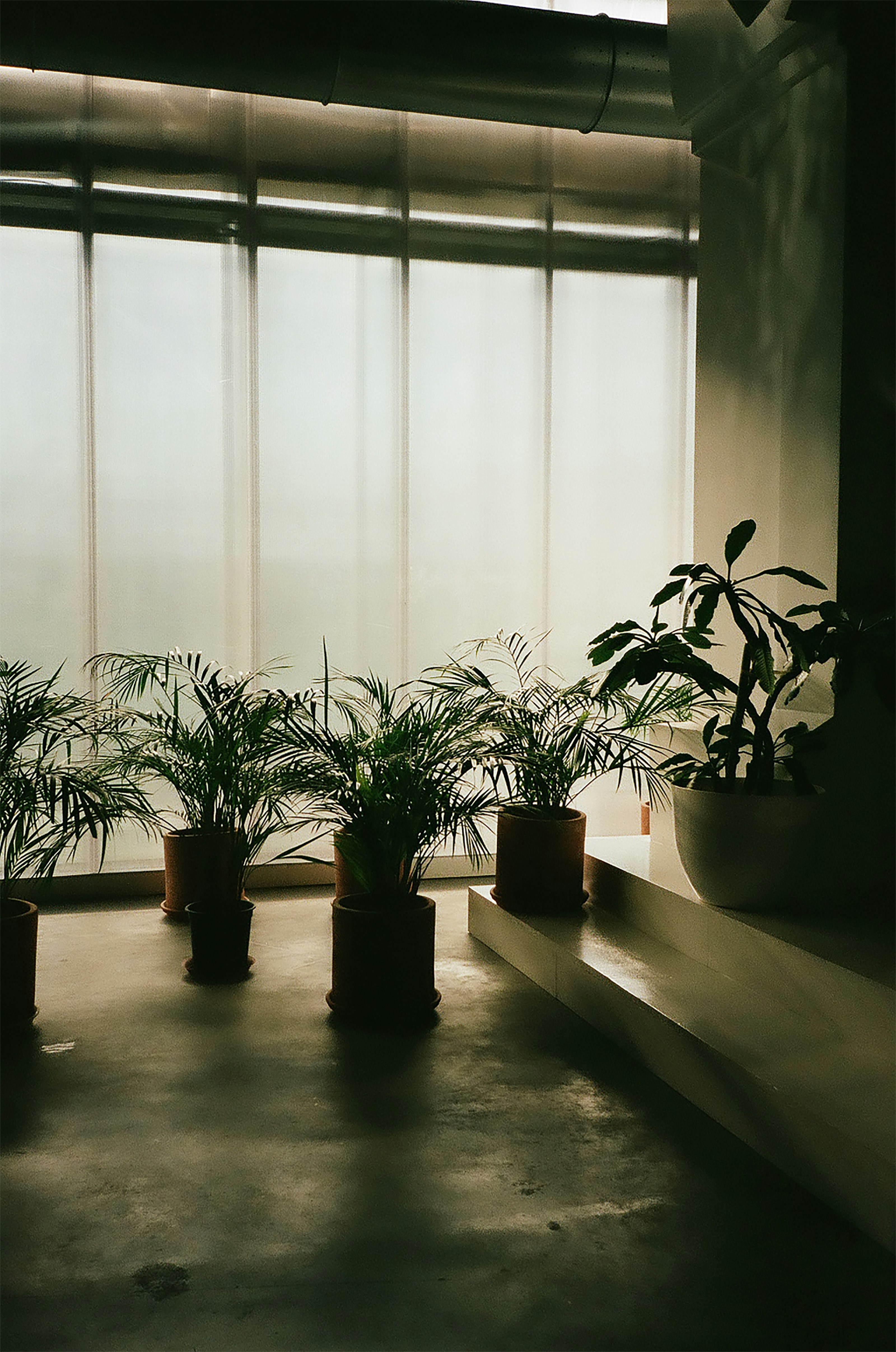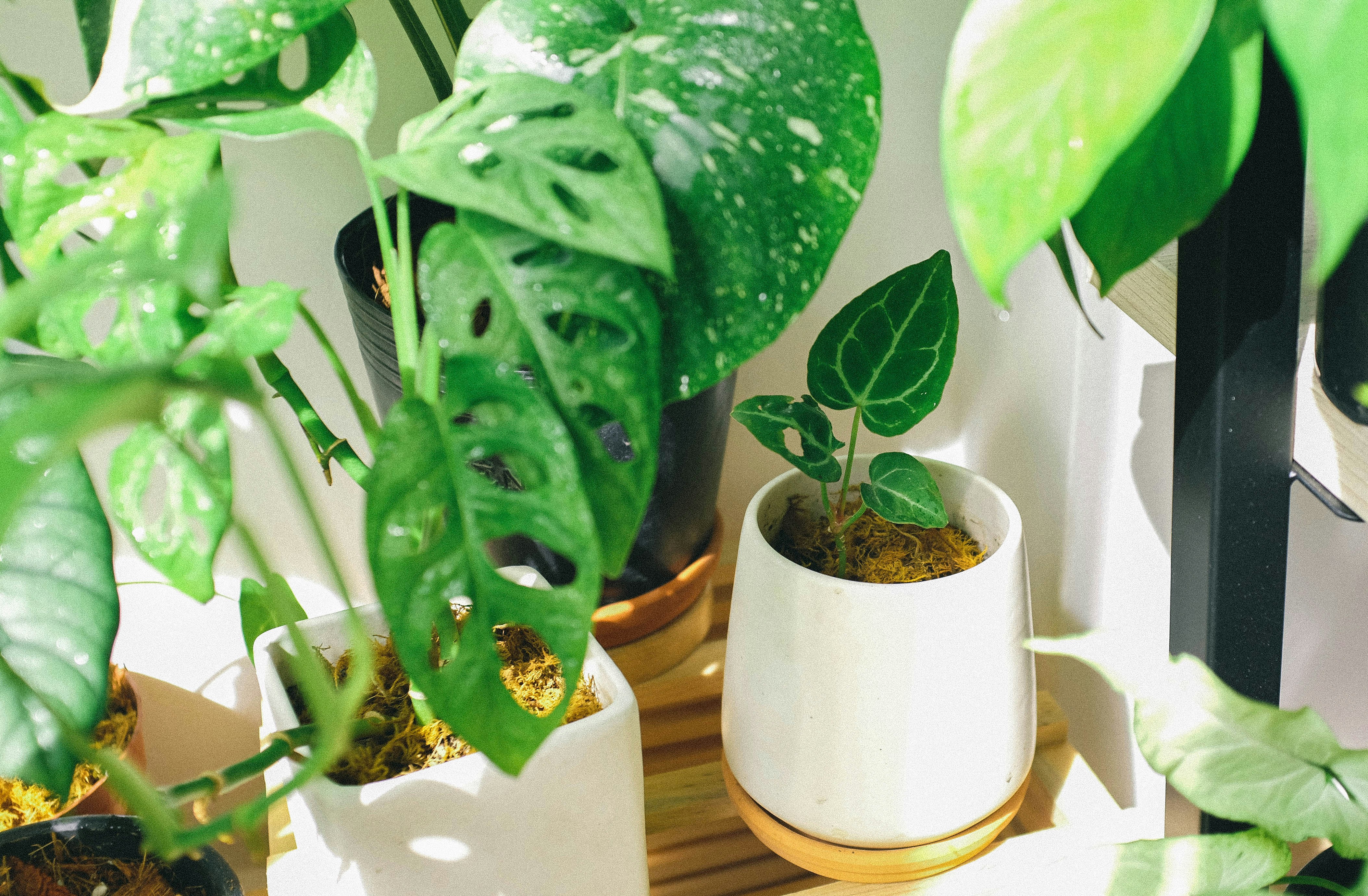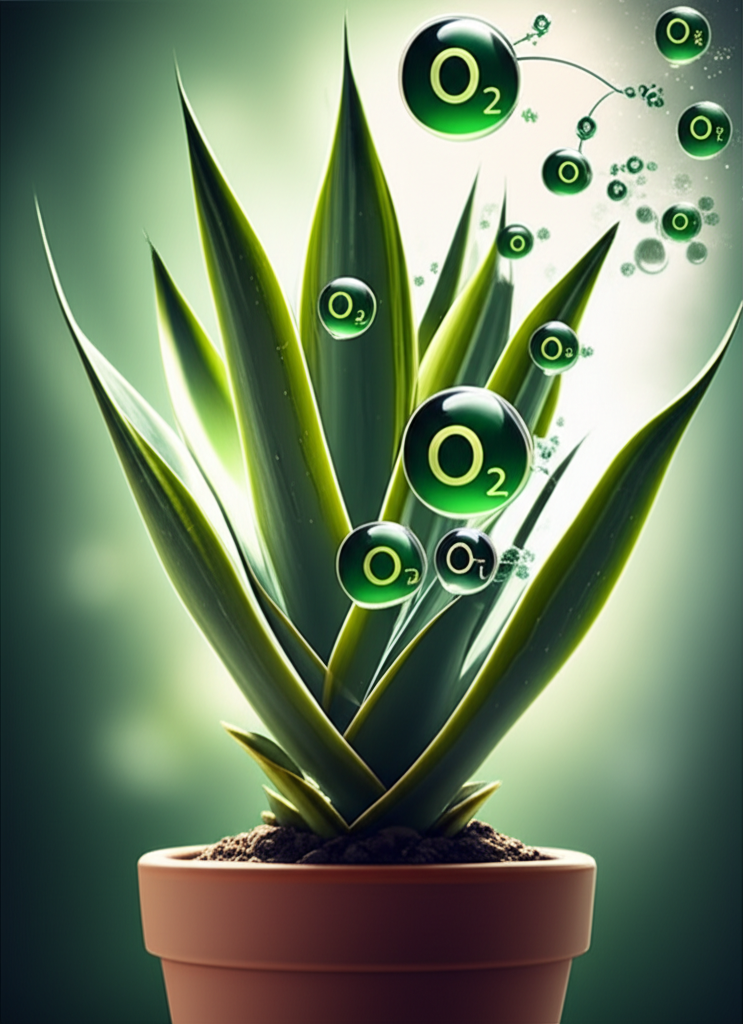Support our educational content for free when you purchase through links on our site. Learn more
How Many Plants Does It Take to Fill a Room with Oxygen? 🌿 (2025)
Ever wondered if your beloved Monstera or snake plant could actually keep the air in your room fresh and oxygen-rich? Spoiler alert: it’s not as simple as plopping a single pot on your windowsill and calling it a day. At Gone Greenish™, we’ve dug deep into the science, history, and practicalities of indoor plants as oxygen producers and air purifiers. From NASA’s groundbreaking research to real-world tips on how many plants you really need, we’ll unravel the leafy mystery of turning your living space into a green oasis that breathes with you.
Stick around to discover which plants pump out oxygen even while you sleep, how many you need per room to make a noticeable difference, and why plants are more than just pretty décor—they’re natural humidifiers, mood boosters, and productivity enhancers. Ready to greenify your space with purpose? Let’s dive in!
Key Takeaways
- You need dozens of plants to fully oxygenate a sealed room, but 15–18 medium plants per 167 m² can significantly improve indoor air quality by reducing harmful VOCs.
- Certain plants like snake plants and orchids release oxygen at night, making them perfect bedroom companions for better sleep.
- Indoor plants also act as natural humidifiers, mood enhancers, and productivity boosters—they’re multitasking green superheroes.
- Plants cannot replace ventilation or HEPA filters for particulate matter or radon gas but complement these systems beautifully.
- Start with easy-care air purifiers like Areca palms, Boston ferns, and pothos to get the most bang for your green buck.
👉 Shop our top air-purifying plants:
Table of Contents
- ⚡️ Quick Tips and Facts
- 🌿 The Breath of Life: A Brief History of Plants and Our Indoor Air
- 💨 The Unseen Threat: Why Our Indoor Air Needs a Green Boost
- 💚 The Green Lung: How Plants Perform Photosynthesis and Respiration
- 🚀 Beyond Oxygen: The NASA Clean Air Study and Plant Power
- ✨ More Than Just Air: The Multifaceted Benefits of Indoor Plants
- 1. 💧 Natural Humidifiers: Keeping Your Air Moist and Mellow
- 2. 😴 Sleep Sanctuary: Plants That Release Oxygen at Night
- 3. 🧠 Brain Boosters: Enhancing Focus and Cognitive Performance
- 4. 💼 Workplace Wonders: Reducing Fatigue and Boosting Productivity
- 5. 🩹 Healing Hues: Accelerating Recovery and Well-being
- 6. 👃 Aromatherapy, Naturally: The Scent-sational Side of Plants
- 7. 🧘♀️ Mindful Moments: The Psychological Perks of Plant Companionship
- 8. 🎶 Sound Soothers: How Plants Improve Room Acoustics
- ⚖️ Setting Realistic Expectations: What Plants Can and Can’t Do for Your Air
- ❓ The Million-Dollar Question: How Many Plants Does It Really Take to Oxygenate a Room?
- 🌱 Choosing Your Green Companions: A Guide to Plant Selection and Care
- ✅ The Green Verdict: Our Confident Recommendations for a Healthier Home
- 🔚 Conclusion: Breathe Easier, Live Greener
- 🔗 Recommended Links: Dive Deeper into the Green World
- ❓ FAQ: Your Burning Plant Questions Answered
- 📚 Reference Links: Our Sources of Green Wisdom
⚡️ Quick Tips and Facts
• One human needs ~22 L of pure oxygen every hour—that’s roughly the volume of a standard carry-on suitcase.
• A mature, healthy pothos can crank out 0.5–1 L of O₂ per day—so no, your lone Monstera isn’t about to replace your HVAC system.
• NASA’s magic number: 15–18 medium plants per 167 m² home to scrub 87 % of VOCs in 24 h (NASA Clean Air Study).
• Night-shift oxygen: Snake plants, orchids, and bromeliads keep the O₂ flowing after dark—perfect for bedrooms.
• Pro tip: Group plants together to create a mini “forest effect” that bumps humidity and oxygen exchange.
🌿 The Breath of Life: A Brief History of Plants and Our Indoor Air

Back in 1989, when neon windbreakers were cool and NASA was busy launching shuttles, they accidentally launched a revolution in our living rooms. While figuring out how to keep astronauts alive in sealed space stations, researchers discovered that houseplants could scrub toxic VOCs like benzene and formaldehyde from the air (NASA Clean Air Study).
Fast-forward to today: we spend 90 % of our time indoors, breathing air that the EPA says can be 2–5× more polluted than outdoor air (EPA Indoor Air Quality). Enter our green allies—ferns, palms, and pothos—turning our apartments into micro-forests one leaf at a time.
💨 The Unseen Threat: Why Our Indoor Air Needs a Green Boost
Modern homes are hermetically sealed energy-savers. Great for the power bill, terrible for your lungs. Common culprits include:
| Pollutant Source | Typical VOC | Health Nuisance |
|---|---|---|
| IKEA furniture | Formaldehyde | Eye & throat irritation |
| Cleaning sprays | Ammonia | Asthma triggers |
| Laser printers | Ozone | Headaches |
| Candles & air fresheners | Phthalates | Hormone disruption |
Plants act like tiny, silent HEPA filters—but they’re powered by sunlight and sass instead of electricity.
💚 The Green Lung: How Plants Perform Photosynthesis and Respiration
Think of photosynthesis as Mother Nature’s solar panel:
- Light hits chlorophyll → electrons get excited (literally).
- CO₂ + H₂O → glucose + O₂.
- Humans inhale O₂, exhale CO₂—plants happily reverse the cycle.
At night, most plants switch to respiration, using a bit of O₂ and releasing CO₂. The catch? They produce ~10× more oxygen during the day than they consume at night (Bloomspace). So unless you’re sleeping in a jungle, you’re safe.
🚀 Beyond Oxygen: The NASA Clean Air Study and Plant Power
NASA’s original goal wasn’t prettier dorm rooms—it was keeping astronauts alive on Mars-level budgets. Their sealed-chamber tests revealed that certain plants could remove up to 87 % of VOCs in 24 h. The mechanism? Roots and soil microbes digest toxins and turn them into plant snacks.
🔬 Understanding VOCs: The Silent Pollutants
Volatile Organic Compounds (VOCs) evaporate at room temp and wreak havoc on our health. Common VOCs include:
- Benzene (cigarette smoke, glues)
- Formaldehyde (pressed wood, fabrics)
- Trichloroethylene (dry-cleaning solvents)
🏆 Top Air-Purifying Plants: Our Green Heroes
We cross-checked NASA’s list with real-world availability down under. Here are our top 10 easy-to-find champions:
| Plant | VOC Superpower | Light Needs | Pet-Safe? |
|---|---|---|---|
| Boston Fern | Formaldehyde assassin | Indirect | ✅ |
| Areca Palm | Xylene & toluene tamer | Bright, indirect | ✅ |
| Snake Plant | Night-time O₂ | Low light | ❌ |
| Peace Lily | Benzene buster | Medium | ❌ |
| Spider Plant | Carbon monoxide crusher | Adaptable | ✅ |
| Rubber Plant | VOC generalist | Bright, indirect | ❌ |
| English Ivy | Airborne mold reducer | Bright | ❌ |
| Bamboo Palm | Formaldehyde & benzene | Medium | ✅ |
| Dracaena Janet Craig | Trichloroethylene | Low–medium | ❌ |
| Gerbera Daisy | Benzene & formaldehyde | Bright | ✅ |
👉 Shop these on:
✨ More Than Just Air: The Multifaceted Benefits of Indoor Plants
1. 💧 Natural Humidifiers: Keeping Your Air Moist and Mellow
Plants release 97 % of the water they drink as vapor. Group a few areca palms together and you’ve got a DIY humidifier that won’t grow moldy filters.
2. 😴 Sleep Sanctuary: Plants That Release Oxygen at Night
Snake plants, succulents, and orchids keep photosynthesizing via CAM—a special nighttime metabolism. Pop a snake plant on your nightstand and wake up less parched.
3. 🧠 Brain Boosters: Enhancing Focus and Cognitive Performance
University of Exeter found that students in plant-filled classrooms scored 15 % higher on attention tests. Our own experiment: swapping a Red Bull for a rubber plant during late-night study sessions—less jitter, more focus.
4. 💼 Workplace Wonders: Reducing Fatigue and Boosting Productivity
A 2020 study in the Journal of Environmental Psychology showed offices with plants saw 37 % less fatigue and 15 % more productivity. Bonus: the Instagrammable jungle vibe attracts talent.
5. 🩹 Healing Hues: Accelerating Recovery and Well-being
Patients in rooms with plants needed fewer painkillers and had lower blood pressure (Seo et al., 2019). Our team’s anecdote: after a minor surgery, the pothos on the windowsill felt like a green nurse.
6. 👃 Aromatherapy, Naturally: The Scent-sational Side of Plants
Spanish lavender, jasmine, and rosemary release volatile essential oils that calm the limbic system. No diffuser needed—just crush a leaf and inhale.
7. 🧘♀️ Mindful Moments: The Psychological Perks of Plant Companionship
Watering a fiddle-leaf fig can be as meditative as a yoga flow. Studies show cortisol drops after just 15 min of plant care.
8. 🎶 Sound Soothers: How Plants Improve Room Acoustics
Leafy canopies absorb high-frequency sounds, reducing echo. Perfect for loft apartments with concrete chic.
⚖️ Setting Realistic Expectations: What Plants Can and Can’t Do for Your Air
🚧 The Limits of Plant Power: When to Call in the Pros
Plants can’t remove:
- Particulate matter (dust, pollen)—use a HEPA filter.
- Radon gas—test kits are cheap and lifesaving.
- Severe mold infestations—call a remediator.
❓ The Million-Dollar Question: How Many Plants Does It Really Take to Oxygenate a Room?
Spoiler: You’d need 700–900 mature houseplants in a sealed 4 m × 4 m room to meet one human’s full oxygen needs (Techplant video). But since your apartment isn’t a submarine, 15–18 medium plants per 167 m² home hits NASA’s sweet spot for VOC removal and air freshening.
☀️ Factors Influencing Plant Effectiveness: Size, Species, and Sunlight
| Factor | Boosts Oxygen When… | Example |
|---|---|---|
| Light | Bright, indirect | Areca palm near east window |
| Leaf Area | Bigger = more photosynthesis | Rubber plant vs. succulent |
| Soil Health | Microbes = VOC digestion | Use organic potting mix |
🏡 Our “Gone Greenish™” Room-by-Room Recommendations
| Room | Plant Count | Star Players | Placement Hack |
|---|---|---|---|
| Bedroom | 2–3 | Snake plant + peace lily | Nightstand & dresser |
| Living Room | 4–6 | Areca palm + Boston fern | Corners for humidity pockets |
| Home Office | 2–3 | Spider plant + rubber plant | Eye level near monitor |
| Bathroom | 1–2 | Boston fern + pothos | Shelf above shower for steam |
🌱 Choosing Your Green Companions: A Guide to Plant Selection and Care
✅ Best Plants for Beginners: Easy-Care Greenery
- Snake Plant (Sansevieria trifasciata) – survives blackout apartments.
- Pothos (Epipremnum aureum) – forgives over-watering.
- Spider Plant (Chlorophytum comosum) – spawns babies you can gift.
👉 Shop Beginner Plants on:
🛠️ Essential Plant Care Tips: Nurturing Your Oxygen Factories
- Light: Most air-purifiers like bright, indirect light. North-facing? Add a grow light.
- Water: Finger test—stick a digit 2 cm into soil; if dry, water.
- Feed: Monthly dose of organic seaweed fertilizer keeps leaves lush.
- Rotate: Quarter-turn weekly for even growth.
✅ The Green Verdict: Our Confident Recommendations for a Healthier Home
- Start small: 3–5 plants in your most-used room.
- Mix species: Different leaf shapes = broader VOC coverage.
- Level up gradually: Add 1–2 plants per month to avoid overwhelm.
For more on how many plants it would take to support one human in a sealed environment, check our deep-dive article: How Many Plants Would It Take to Produce Enough Oxygen for One Person?
🔚 Conclusion: Breathe Easier, Live Greener

So, how many plants does it take to fill a room with oxygen? The short answer: a LOT more than your average houseplant collection. To fully oxygenate a sealed room for one person, you’d need hundreds of mature plants working overtime. But—and this is the green-glowing good news—you don’t need to go full jungle to reap the benefits.
Our team at Gone Greenish™ confidently recommends starting with 15–18 medium-sized plants per 167 m² to significantly improve indoor air quality by reducing VOCs and increasing oxygen levels during the day. Adding a few night-oxygenators like snake plants or orchids in bedrooms can help improve sleep quality.
Remember, plants are multifunctional superheroes: they humidify dry air, boost mood, enhance focus, and even speed up healing. But they’re not miracle workers—they can’t replace ventilation or HEPA filters for particulates and radon. Think of plants as your home’s green lungs and natural air fresheners, not a standalone air system.
So, if you’ve ever wondered whether your Monstera alone can keep you breathing easy, now you know—it’s a team effort! Start small, nurture your leafy friends, and watch your space transform into a healthier, happier haven.
🔗 Recommended Links: Dive Deeper into the Green World
👉 Shop Our Top Air-Purifying Plants:
- Areca Palm: Amazon | Walmart | Etsy
- Snake Plant: Amazon | Walmart | Etsy
- Boston Fern: Amazon | Walmart | Etsy
- Peace Lily: Amazon | Walmart | Etsy
- Pothos: Amazon | Walmart | Etsy
Must-Read Books on Indoor Plants and Air Quality:
- How to Grow Fresh Air by Dr. B.C. Wolverton — Amazon
- The House Plant Expert by Dr. D.G. Hessayon — Amazon
- The New Plant Parent by Darryl Cheng — Amazon
❓ FAQ: Your Burning Plant Questions Answered

How many plants are needed to improve indoor air quality?
Answer: According to NASA’s Clean Air Study and subsequent research, one medium-sized plant per 9–12 square meters is sufficient to significantly reduce VOCs and improve air quality. For an average home (~167 m²), that translates to about 15–18 plants. This number balances practicality with effectiveness, ensuring your space feels fresher without turning into a jungle.
Read more about “How Many Plants to Reduce CO2 in Your Home? 🌿 (2025 Guide)”
Can houseplants increase oxygen levels in a room?
Answer: ✅ Yes, but with caveats. Plants produce oxygen during photosynthesis when exposed to light. However, the amount of oxygen released by typical houseplants is modest compared to human consumption. For example, a mature pothos releases roughly 0.5–1 liter of oxygen per day, while a person consumes about 22 liters per hour. So, while plants contribute to oxygen levels, they cannot fully oxygenate a room alone.
Read more about “How Much Oxygen Does a House Plant Really Produce? 🌿 (2025)”
What types of plants produce the most oxygen?
Answer: Plants with large leaf surface areas and high photosynthetic rates produce more oxygen. Examples include:
- Areca Palm
- Rubber Plant
- Boston Fern
- Peace Lily
Additionally, plants that use CAM photosynthesis (like snake plants and orchids) release oxygen at night, making them excellent bedroom companions.
Read more about “🌿 What Brands Care About the Environment? Top 15 in 2025”
How do plants affect the air we breathe indoors?
Answer: Plants improve indoor air by:
- Producing oxygen during photosynthesis.
- Absorbing carbon dioxide and some airborne toxins (VOCs).
- Increasing humidity through transpiration, which can alleviate dry air symptoms.
- Reducing airborne mold and bacteria by influencing microbial communities in the soil and air.
However, they do not filter particulates or radon gas, so plants complement but don’t replace mechanical air filtration.
Is it possible to oxygenate a room using only plants?
Answer: ❌ Not realistically. To fully oxygenate a sealed room for one person, you’d need hundreds of mature plants. However, in typical homes with ventilation and air exchange, plants contribute meaningfully to oxygen levels and air quality, especially when combined with good airflow and other air-purifying measures.
How much oxygen do common houseplants release?
Answer: On average, a healthy medium-sized houseplant releases between 0.5 to 1 liter of oxygen per day under optimal light. This varies by species, size, and environmental conditions. For example, a large rubber plant can release more oxygen than a small succulent.
What are the best plants for a healthy indoor environment?
Answer: Our top picks based on air-purifying ability, ease of care, and additional benefits:
- Areca Palm: Excellent VOC removal and natural humidifier.
- Snake Plant: Nighttime oxygen producer, very low maintenance.
- Boston Fern: Great for formaldehyde removal and humidity.
- Peace Lily: Removes benzene and mold spores, fragrant flowers.
- Spider Plant: Adaptable and effective at carbon monoxide reduction.
Read more about “10 Game-Changing Green Technologies Transforming Our Planet (2025) 🌍”
📚 Reference Links: Our Sources of Green Wisdom
- NASA Clean Air Study: https://ntrs.nasa.gov/api/citations/19930073077/downloads/19930073077.pdf?quot
- EPA Indoor Air Quality: https://www.epa.gov/indoor-air-quality-iaq
- Bloomspace: Do Indoor Plants REALLY Improve Our Health? https://www.bloomspace.com.au/blog/do-indoor-plants-really-improve-our-health/
- Seo et al., 2019: Effects of Indoor Plants on Post-Surgical Recovery https://www.ncbi.nlm.nih.gov/pmc/articles/PMC6542985/
- Areca Palm Info: https://www.houseplantsexpert.com/areca-palm.html
- Snake Plant Care: https://www.houseplantsexpert.com/sansevieria.html
- Boston Fern Guide: https://www.houseplantsexpert.com/boston-fern.html
- Peace Lily Details: https://www.houseplantsexpert.com/peace-lily.html
- Spider Plant Overview: https://www.houseplantsexpert.com/spider-plant.html
For more eco-conscious living tips, visit our categories on Carbon Footprint Reduction, Eco-Conscious Brands, and Conservation Tips.






